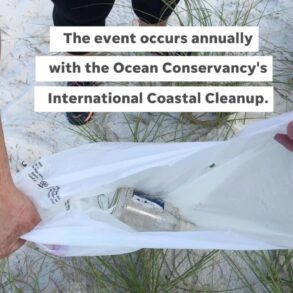
Image credit:
(Photo by Kyle Rivas/Getty Images)
In many ways, baseball is more predictable now than it was not long ago.
It used to be common to see trades that seemed hard to explain. When the Diamondbacks traded shortstop Dansby Swanson—the No. 1 pick in the most recent draft at the time—along with a big league outfielder and a pitching prospect to land righthander Shelby Miller and lefthander Gabe Speier from the Braves, it seemed like a lopsided trade from day one. The Tigers trading J.D. Martinez in the middle of a .303/.376/.690 season for three potential utility infielders never seemed to make much sense.
Now, my reaction to most major trades is an extremely boring one: It’s easy to see what both teams are trying to do.
Yes, teams still win trades–and they absolutely lose them, too. If you trade stars (like Mookie Betts), your best hope is probably to break even.
But most of the time, the logic is clear. One team is getting big league talent. The other is getting either a close-to-the-majors prospect(s) with limitations or a far away, intriguing talent(s) who could become stars or possibly flame out multiple levels away from the big leagues. Sometimes it’s a salary dump dressed up as a prospect return with a one-in-25 shot at becoming a big league contributor.
But the inexplicable trades have largely disappeared. Every team has similar models. Everyone thinks largely the same way. When a team finds an edge nowadays, it holds that edge for tiny slivers of time before everyone else figures it out.
In so many ways, MLB teams in the 2020s are extremely well-run. They are extremely logical and rarely make mistakes. But there is a way they are often much worse than their forebearers. Because they don’t take big swings, these same well-run teams are often terrible at selling their product to fans.
The chief baseball officers of the 2020s look great in a quarter zip. They can comfortably flip between talking about sliders with a middle reliever and balance sheets with their owner.
But when it comes to selling a little bit of hope, or giving fans reasons to dream, they often come across as anodyne.
Quick quiz. What MLB GM/team president do you think is best at inspiring the fan base to get excited about their team’s direction?
Did anyone come to mind?
When Jerry Dipoto said in October 23 that the Mariners’ goal was to win 54% of their games at the end of a solid season, he unintentionally told fans that they should downsize their dreams. Dipoto quickly apologized for what he said. But two subsequently quiet offseasons has made it hard for the team to overcome that narrative with the fan base.
M’s fans saw the arrival of George Kirby, Julio Rodriguez, Bryan Woo and Cal Raleigh as a sign that the team could strive to put decades of disappointment behind them. Dipoto’s comments told them that 2023 was less the start of something great as much as that hopefully could be maintained.
It’s better to fall short while aspiring for greatness than to tell fans that you’re aiming to be the equivalent of a reliable used Toyota Corolla. Corolla’s are great cars. They are reasonably priced. They don’t break down. And you won’t ever get excited to slide behind the wheel.
Fans buying tickets and paying for streaming packages don’t think like executives. They want to see big swings and stars. They want to have a reason to have strong opinions about their team.
Overspending on free agents can drive fans to spend their money. Prudently sitting out the offseason and bargain shopping can drive them away. In the 2020s, fans seem most frustrated by the teams that never try to be great.
Take the Padres. They have won 90 games just once in the past 14 seasons. But their steady stream of big moves that landed Manny Machado, Blake Snell and Yu Darvish to go around Fernando Tatis Jr. and now Jackson Merrill have given fans plenty to care about. Now, San Diego has one of the best fan bases in baseball and was one of four teams to average more than 40,000 fans per game last season.
Contrast that with the Orioles. In many ways, they are a bigger success than the Padres. They won 101 games in 2023–eight more than any Padres season in the 21st century–and reached the playoffs in back-to-back seasons for the first time since the Cal Ripken Jr. era, even if last year’s 91-win season felt like a disappointment because of their quick exit.
Baltimore spent money last offseason as well. Free agents Tyler O’Neill, Charlie Morton, Tomoyuki Sugano, Andrew Kittredge, Gary Sanchez and Ramon Laureano will earn nearly $70 million combined in 2025.
But for a fan base hoping to see a big-name addition or a Corbin Burnes-style trade, the offseason seemed surprisingly modest. Prudent, short-term deals for back-end starters may be quite rational, but it doesn’t inspire fans. Burnes left town for a $210 million deal with Arizona. The Orioles have not seen an attendance boost like the Padres have.
The Pirates have the best pitcher in baseball, but their fans are almost resigned to the team not making any significant moves to improve the offense. The Twins followed up their first playoff series win in years by cutting payroll in 2024. Instead of getting a post-playoff boost, attendance dropped. This year, the team’s home attendance is down more than 1,000 fans per game compared to this time last year.
Winning can solve most of these problems. But baseball has entered a new era. The regional sports network model, where clubs were paid whether fans watched or not, is dying. It’s getting replaced by a direct-to-consumer model, meaning in ways we’re returning to an earlier era of baseball, where owners and managers were promoters as well as operators.
If your fan base isn’t buying what you’re selling, you risk a doom loop: lower revenue leads to less spending, which angers fans, which leads to fewer tickets sold and fewer subscriptions, and the cycle continues.
But a little hope can go a long way.
Peter Seidler sold that vision to Padres’ fans before his passing, and they kept coming out even when the team went 82-80 in 2023.
Phillies’ managing partner John Middleton does an excellent job of it as well. No one will mistake Middleton for Bill Veeck, but his ability to consistently explain to fans how he cares about winning, and his desire to operate the club in ways that he himself describes as fan focused rather than cost effective has resonated with the fan base.
Maybe owners are better at connecting with fans than the team presidents. But in an era when TV subs are going to drive a significant chunk of revenue, a hidden advantage in the late 2020s are the organizations that better convince their fan bases to care.
This post was originally published on this site be sure to check out more of their content



